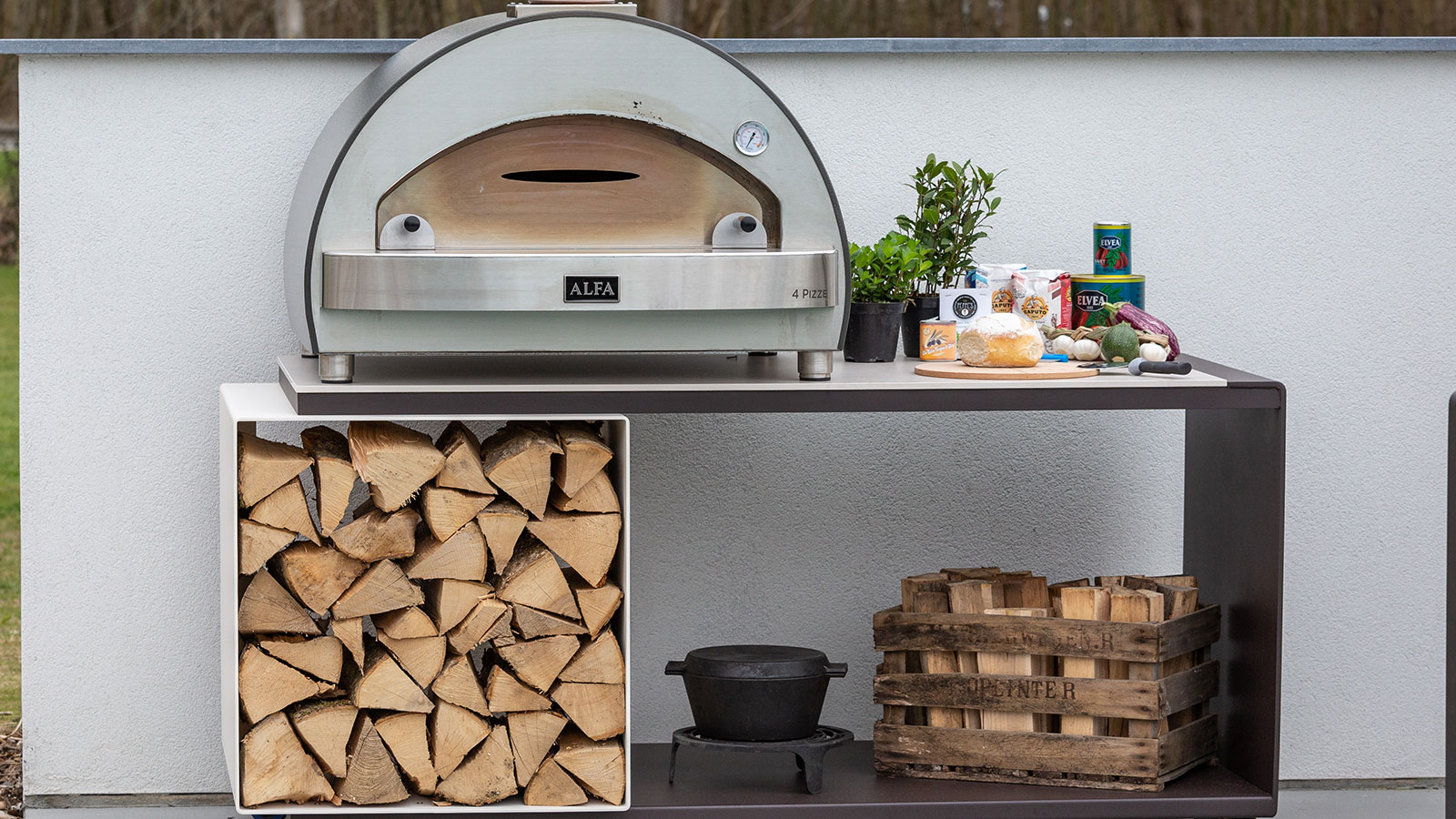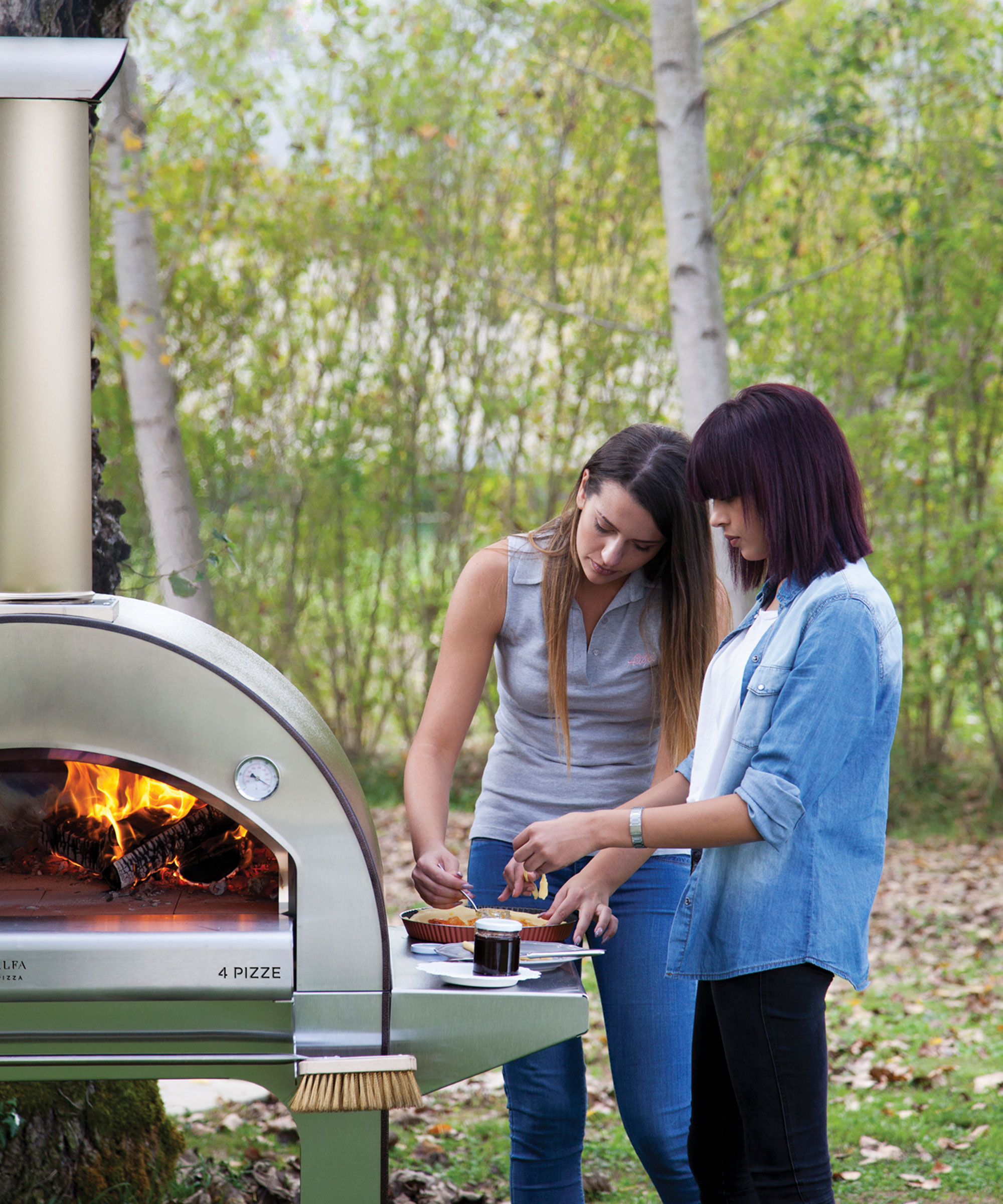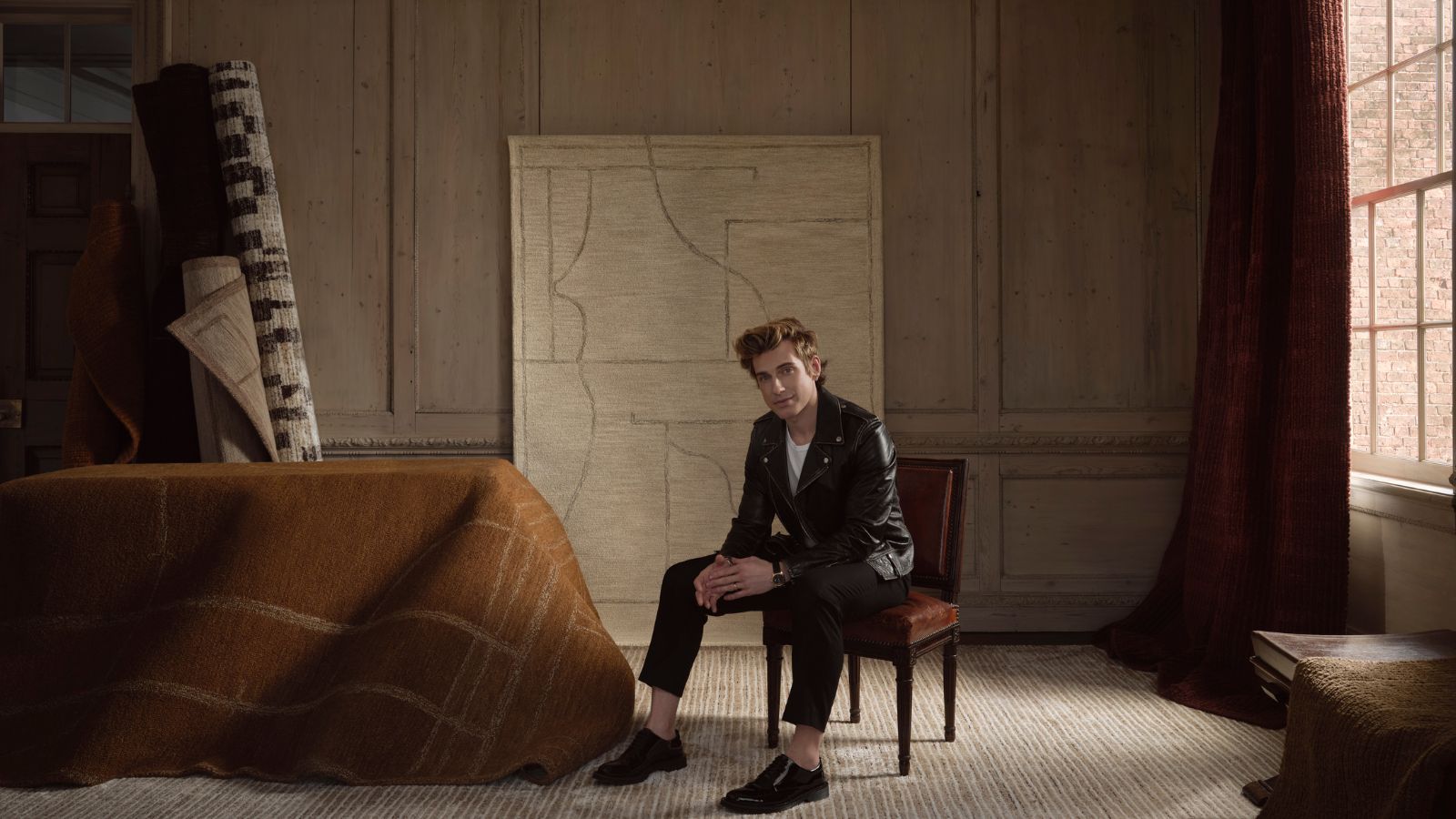What’s the best wood for a pizza oven? Essential fuel advice
Whether yours is fuelled by pellets or logs, get in the know about wood to make cooking in a pizza oven stress-free


Pizza ovens were traditionally wood fuelled and using a wood-fired oven creates authentic flavor. An oven fuelled this way can reach and maintain a high temperature allowing you to serve up delicious slices of pie in the surroundings of your own backyard.
When you’re buying one of the best pizza ovens you can choose between larger models fuelled by wood or a smaller pellet-fuelled portable model, but either way, the wood you use is crucial. For unbeatable taste and texture, fuel with a high heat output is a must.
Here, we explain which wood you should use in a pizza oven as well as all you need to know about the pellets for a portable pizza oven.
How to choose the best wood for a pizza oven
Take your lead from authentic pizzerias when choosing wood for a pizza oven and go for kiln-dried hardwood. ‘It’s more dense than softwood and therefore has a higher energy capacity, meaning you’ll get more heat from a hardwood log in comparison to a softwood log for the same size,’ explains Luke Cochrane, project coordinator – groceries & fuel, Ooni Pizza Ovens.
Wood influences flavor, too. ‘Hardwood tends to have a lower lignin content (lignin is the glue that keeps the wood fibers together). The higher the lignin content, the smokier the burn will be and you’re likely to get bitter flavors coming through in your food.’
As for the wood species? ‘We would recommend using oak or beech when choosing your wood fuel, however, any common cooking wood will work, for example, mesquite, hickory, applewood or cherry,’ says Luke.

Pay attention to moisture content
As well as the species, how much moisture the wood to fuel a pizza oven contains is a factor when you’re searching for the best choice. Look for kiln-dried wood and focus on what’s called the moisture content. ‘The absolute maximum you should be looking for is 20 per cent moisture content,’ explains Ooni’s Luke Cochrane. ‘We aim to have a moisture content somewhere between 10 and 16 per cent for our wood products.’
Wood that doesn’t fit the bill can prove a problem, especially when it comes to lighting a pizza oven. ‘If the moisture content is too high (greater than 20 per cent) then you will likely have difficulty lighting the product,’ explains Luke. ‘You’re also likely to have quite a smoky fire as the extra water content will decrease the efficiency of combustion. Not only this but there’ll be nasty particulates that can be hazardous to your health if you’re exposed enough times.’
But note that wood can be too dry. ‘If the moisture content is too low (less than 10 per cent) then the wood is going to be burning very quickly and you’ll find yourself adding to your fire regularly. The small amount of moisture content helps to regulate and control both the longevity and efficiency of the burn.’
Wood pellet pizza ovens
Some pizza oven owners will need to use wood pellets. ‘Wood pellets are typically used for portable pizza ovens, such as our Ooni Fyra 12 wood pellet pizza oven,’ says Luke Cochrane. ‘This is because they’re less bulky than the log format counterpart and they have a higher calorific content, meaning they burn hotter for less and take up less space to transport. Another benefit is that they’re a by-product of the sawmilling process so you’re helping to reduce waste in one industry by using something beneficial in another.
’Pellets have a higher burning efficiency due to their increased surface area per kilogram in comparison to logs; produce a cleaner combustion as a result; and require a smaller flue (chimney) to discharge the smoke which helps with portability.’

The Ooni Fyra 12 is fuelled by wood pellets
Choosing the best wood pellets
If yours is a pizza oven fuelled by wood pellets it is equally vital to be in the know about the best fuel – although, as Luke Cochrane notes, things are not as straightforward as they are with wood.
‘Your most suitable option will depend on where you live and the type of pellets available,’ Luke says. ‘When it comes to the burning qualities of hardwood and softwood there’s little to no difference between them.
‘The main things to look out for are the following: in the US especially, softwood pellets generally have binding agents and additives added to them to improve performance and longevity during travel. As such, they’re not recommended for cooking. That’s why in the US we recommend using hardwood pellets as they’re more readily available.
‘In the UK and EU, however, there are more options: hardwood pellets are a viable option here, too – we would recommend using oak or beech however any common cooking wood will work. Softwood pellets can be used provided they are food grade. One accreditation to look out for is the ENPlus A1 badge. This shows that the pellets being purchased have no binding agents or additives and will burn cleaner. The packaging should also mention that they are suitable for cooking use.’
Wood pellet moisture content
Hardwood pellets such as oak and beech are safe options, but what about the moisture content of this type of fuel?
‘In between 10 and 15 per cent is the sweet spot for an efficient burn,’ says Luke Cochrane. ‘You’re going to want a maximum ash content of 1 per cent (ideally around 0.7 per cent). This should be specified by the manufacturer on the packaging. A high ash content means there’s lots of soot left over and will likely give your pizza dusting during the cooking process. Best to have this as low as possible.’
FAQs
What's the best wood to create flavor in a pizza oven?
Oak is a top choice for authentically flavored pizza and beech a great alternative, but you could choose wood that imparts a taste that’s not traditional, but that you may enjoy.
You can think fruitwoods such as apple or cherry, for example, which will subtly alter a pizza’s flavor in a way many people appreciate. Hickory, meanwhile, has an intense flavor that could be worth experimenting with, while mesquite’s distinctive taste could be a winner combined with suitable toppings.
So long as wood meets the other criteria in that it’s kiln dried with the correct moisture content, trying out alternatives won’t cause a problem when you’re making pizza and could result in a great taste discovery.
Using different types of wood can also be a great way to change the flavor of your BBQ food when lighting a smoker too.
What is the best pizza oven wood moisture content?
The best pizza oven wood moisture content is a minimum of 10 per cent and a maximum of 20 per cent. Look for kiln-dried hardwood when you’re buying that has a moisture content in this range.
Bear in mind that as well as buying wood with the correct moisture content, it’s important to store it correctly. Having proper storage in your outdoor kitchen can be a smart idea, but he most important thing is to keep it away from moisture and store it above the ground, never on it. Keeping it on a purpose-built rack is ideal.
What type of wood you choose for your pizza oven is likely to be dictated by the type of oven you own. Smaller portable models, for example, will use wood pellets rather than the kiln-dried logs you will need for larger built-in ovens.
Do bear in mind that fuel can take up more space than you might think when it comes to finding a place for it in your backyard storage, especially if you are ordering fuel in bulk to keep down costs. Ensure you have a covered space to store it all and keep it dry to guarantee a cleaner, more efficient burn when cooking your pizzas.
Sign up to the Homes & Gardens newsletter
Design expertise in your inbox – from inspiring decorating ideas and beautiful celebrity homes to practical gardening advice and shopping round-ups.

Sarah is a freelance journalist and editor. Previously executive editor of Ideal Home, she’s specialized in interiors, property and gardens for over 20 years, and covers interior design, house design, gardens, and cleaning and organizing a home for Homes & Gardens. She’s written for websites, including Houzz, Channel 4’s flagship website, 4Homes, and Future’s T3; national newspapers, including The Guardian; and magazines including Future’s Country Homes & Interiors, Homebuilding & Renovating, Period Living, and Style at Home, as well as House Beautiful, Good Homes, Grand Designs, Homes & Antiques, LandLove and The English Home among others. It’s no big surprise that she likes to put what she writes about into practice, and is a serial house renovator.
-
 Jeremiah Brent's new NYC-inspired rug collection has got to be the easiest way to bring his modern Manhattan style into your own home
Jeremiah Brent's new NYC-inspired rug collection has got to be the easiest way to bring his modern Manhattan style into your own homeJeremiah Brent has teamed up with Loloi Rugs to create a contemporary collection of home furnishings inspired by his city
By Eleanor Richardson
-
 I tried this one easy dishwasher trick and made the annoying need for manual drying a thing of the past
I tried this one easy dishwasher trick and made the annoying need for manual drying a thing of the pastIf you hate those little pools of water left on your cups and crockery, this towel trick is for you
By Punteha van Terheyden